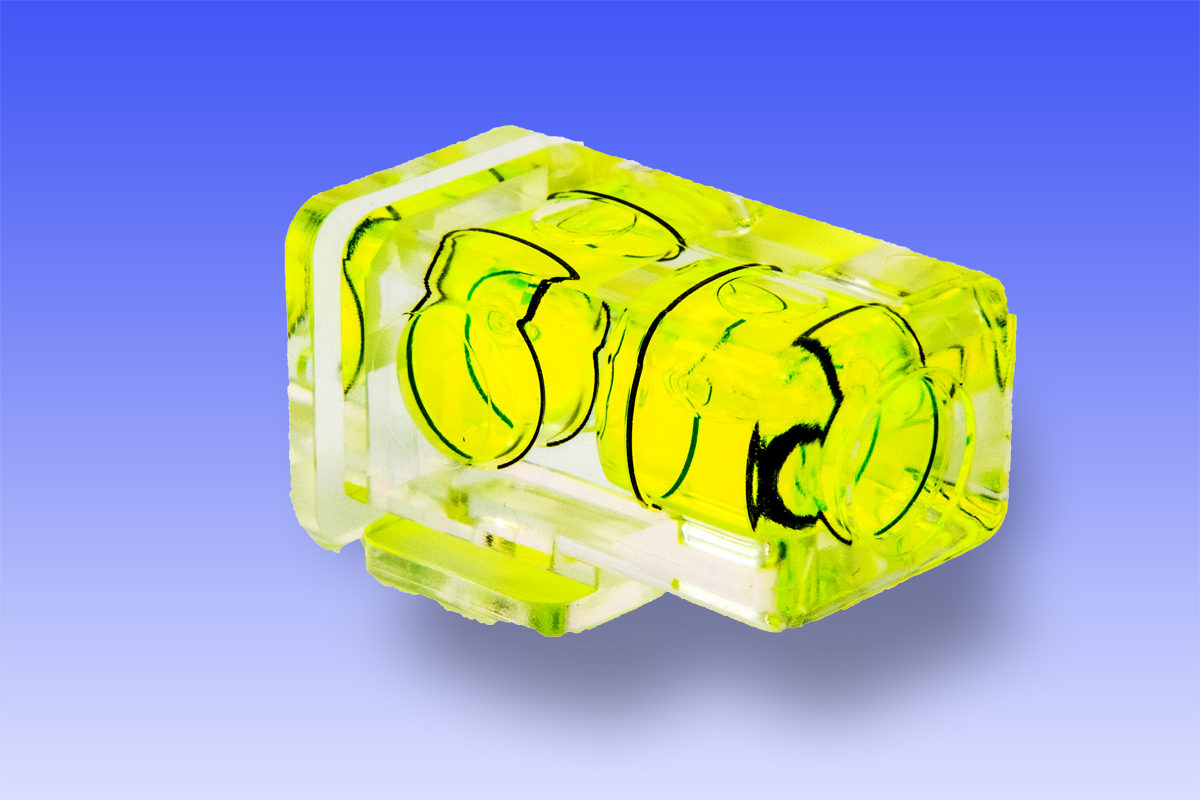
14 Feb When I Wish To Keep A Level Head
Level heads are hard to come by these days. Open social media, look at the news, listen to the commentators. You’ll be doing well if you do not fly into a rage instantly. Even if you do fly into a rage, you’ll only be allowed 7 Kg of baggage…
You may not be able to keep a calm head, but you can keep a level one – the simple accessory seen on this page is the secret.
We’ve had them for years from various makers – little one, two, or three-plane bubble levels that you can fasten to your camera. I’ve been using different versions of them for twenty years – ever since I started serious studio shooting.
The thing is – the illustration of a product, structure, or location is somewhat different from portraiture or event shooting. The subject that you show is seen by people who want to view it somewhat dispassionately. They want the thing to look accurate – or at least to look like their prior mental image. This is tough to do if there is going to be distortion.
The distortions that creep into the illustrative process start early – the lenses that we use can contain optical distortions that blur, curve, and blotch the image. It can be subtle or overt – but unless we are dealing with extremely mystical and fuzzy images, none of our clients are going to be happy with bad lines or bad colours.
The chief trouble for the pack shooter or product worker can be distortions engendered by positioning the camera. When you look at a rectangular packet from an elevated point of view – as you may well do if you wish to see the writing on the top surface – you see the rest of it tapering down away from you. It can be subtle or overt, but it always spoils the shot. You need to get away from it.
You can do this in post-production by cranking in a distortion control that works by distorting the file… Or you can endeavour to square up the camera in the first place. If you can see an object dead-set centered it can be represented that way in the final image.
Many cameras now have an artificial horizon device built-in that lets us level the things side-to side on the viewfinder or back screen – but only a few extend this measurement to the fore-and aft bob that the camera can do – the one that produces the keystone effect. Here is where the bubble level comes in.
As you’ll see, it is a two-plane device. Slide it into the hot shoe and you can be flat-out front and back as well as side to side. No more keystone – no more corrections in Photoshop that shift the central subject out of the space that you originally put it. You can finally shoot closely without having to leave half the frame blank for distortion control.
Plus it’s a cool green slime colour.


No Comments